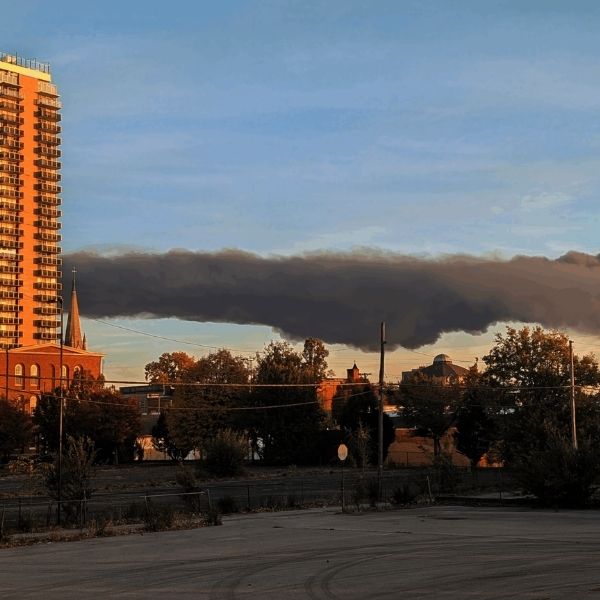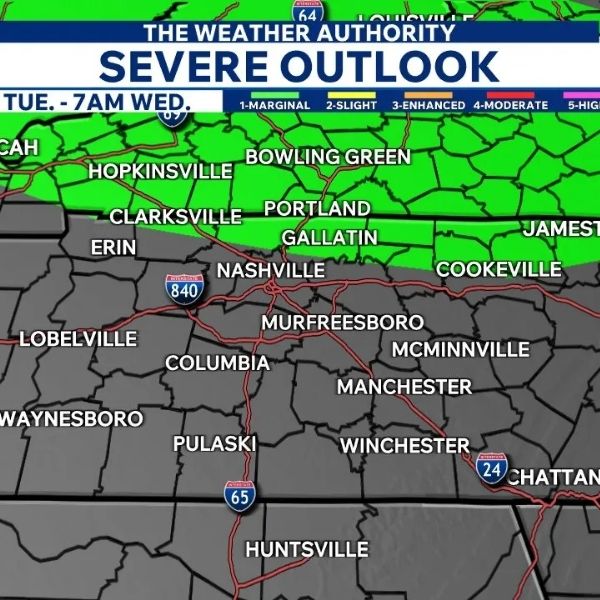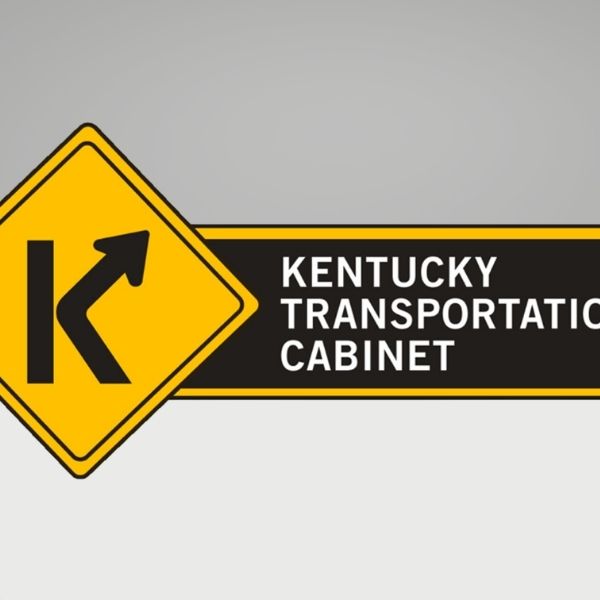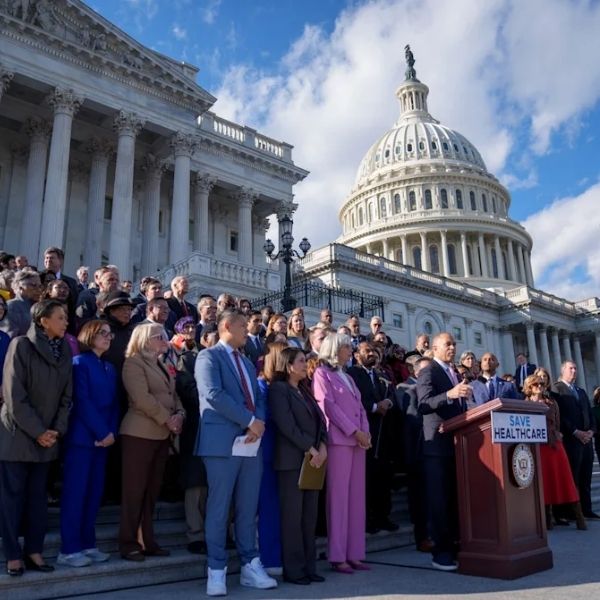WXOX general manager says stations need their own emergency response plan
No one in Louisville needs a reminder of what happened on Nov. 4, 2025, when a fiery fall sunset was replaced by a rising black plume. As usual, DJ Aron Solo was already on the scene.
“Something big in Old Louisville is on fire,” he said in a message with photos showing an enormous cloud swelling above the southside of the city.
“Oh __ %^#@#,” I replied. “What IS that?”
“Like maybe the entire University of Louisville, something huge.”
“Looks like 9/11.”
The 800 Tower apartment complex stood against a backdrop of smoke from Flight 2976 drifting toward downtown above WXOX’s station headquarters. Speculation grew as early details trickled in, but the truth eventually surfaced: a UPS plane carrying 280,000 pounds of gasoline had crashed directly into a petroleum recycling company and an auto parts salvage yard just south of the airport.
It may take months or even years to fully understand the toxic fumes released by the impact. But within minutes, our volunteer rapid-response team at ART FM managed to alert WXOX 97.1 FM listeners with one clear message: “STAY AWAY FROM THE AREA.”
Uncertainty hung over the city until official LENS (Louisville Emergency Notification System) text alerts began hitting our phones. Each message escalated the seriousness of the situation. The shelter-in-place order expanded from the immediate crash site to the entire metro area. The emergency stretched through the night, and Jefferson County schools closed the next day.
From inside community radio station WXOX, we relayed updates as quickly as they appeared on our phones. But in reality, we were operating without critical support.
The costly Emergency Alert System, installed under federal mandates and regularly tested at state and national levels, stayed silent. It hummed quietly in the background as if nothing were happening.
Providing emergency information is ART FM’s highest priority, yet we never imagined we’d be forced to do it alone.
On Nov. 4, the Emergency Alert System failed Louisville. It put our community at risk, and it was not the first time.
Just a month earlier, after the Carbide Industries explosion in Rubbertown, residents reported not receiving alerts and not knowing they needed to register for LENS notifications. According to Nina Clark’s report on Oct. 10, 2025, little progress had been made to fix the problem.
WXOX reached out to Eric Gibson, the state emergency management director, for an explanation. As of this writing, we have not received a response.
The fact that EAS was never activated in Louisville on Nov. 4 is a serious failure on the part of local emergency management. Text alerts help, but they cannot replace broadcast alerts that reach people who don’t have a working phone or can’t access one during an emergency.
This breakdown should push stations across the country to create their own emergency response plans. No one should risk being caught unprepared.
To reduce future failures, the FCC should consider routine testing for EAS originators, similar to the requirements placed on participating stations. Bennett Kobb also suggests the commission expand support for EAS originators by standardizing equipment and offering technical training and assistance.
Residents of Louisville deserve fast, widespread information that helps them protect themselves and their families. They expect officials to use every available tool to deliver it. When powerful systems like EAS exist but go unused, the public deserves answers. Our safety should not depend on whether our phones are charged.
This article has been carefully fact-checked by our editorial team to ensure accuracy and eliminate any misleading information. We are committed to maintaining the highest standards of integrity in our content.











Leave a Comment